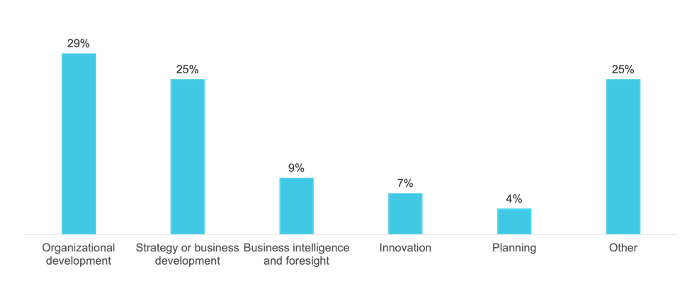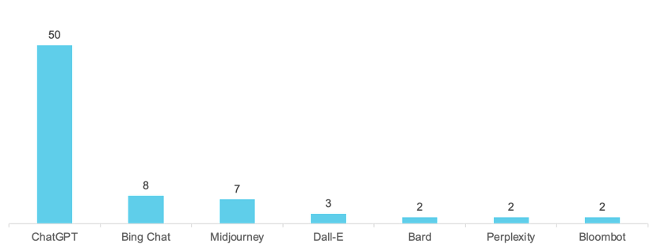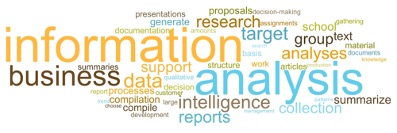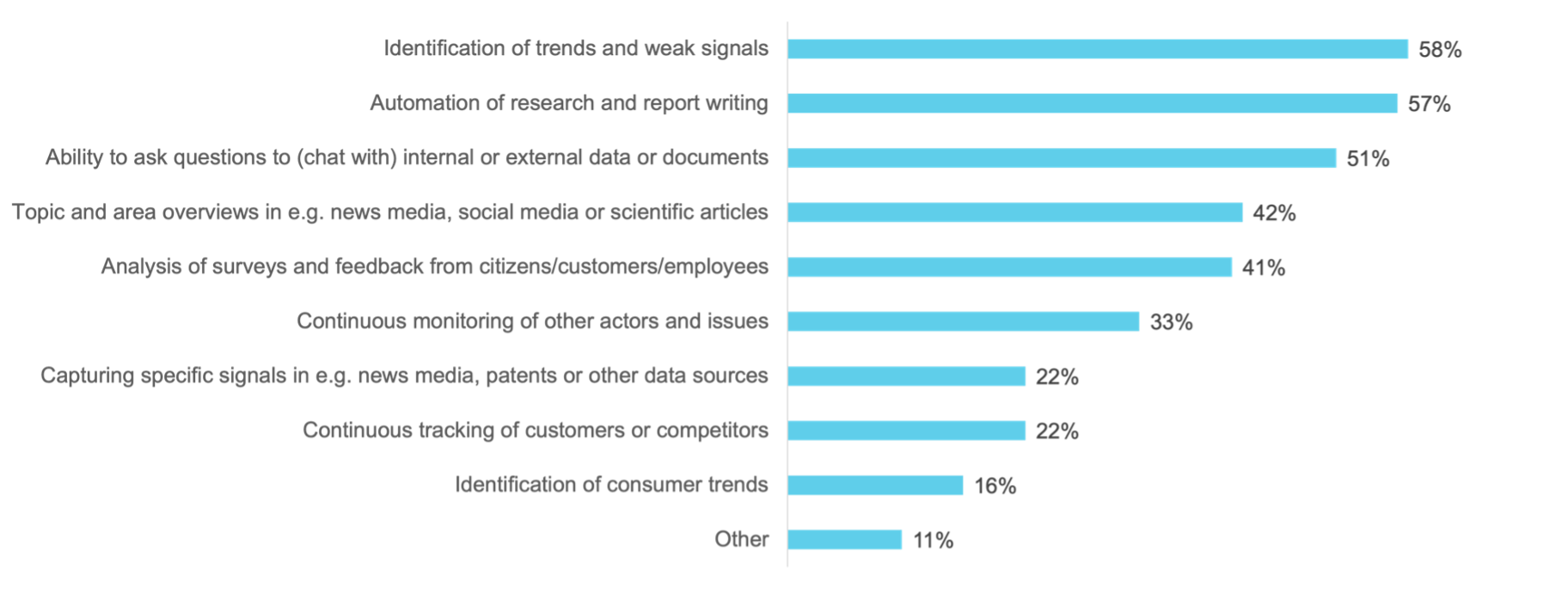Dreams of AI at Work
A mini-study on how generative AI is redrawing the map for analytics and knowledge production.
The Report in Brief
Generative AI has quickly become an important tool in many organizations, not least for research and analysis. But there is much more to generative AI than ChatGPT.
In a project with Dcipher Analytics, Kairos Future asked about 130 business analysts, business developers, strategists, and business leaders how they use generative AI in their work today and what they would like to see in the future. What time-consuming processes would they like to automate – such as monitoring news and social media, analyzing reports and statistics, and writing reports and memos?
The results clearly show a strong desire to simplify and automate a wide range of more mechanical tasks to free up time for more high-value, value-added tasks.
It is also worth noting that most of their dreams are well within the realm of possibility today. It doesn't even have to be particularly expensive to make it happen.
The future is already here. The dream can become reality today.
Dreams of AI in Analysis and Knowledge Production
Generative AI has rapidly redrawn the map for knowledge work. By June 2023, 26% of university-educated people were using generative AI at work, most of them on a daily or weekly basis. Considering that ChatGPT, the dominant service, was only released on November 30, 2022, this is a remarkably rapid evolution. In the fall of 2023, OpenAI's services will also be integrated into Microsoft 365, and Google will release similar solutions in its Office software suite. This will greatly accelerate development.
But generative AI is so much more than ChatGPT, which has clear limitations, not least in a research context. This becomes clear when you look at what analysts, business developers, and other knowledge workers are dreaming of today.
The State of Play Among Business Developers, Strategists, and Others
So what is the current state of generative AI use among business analysts, business developers, strategists, and planners? And what are their hopes for the future?
To find out, we sent out a survey in mid-October to a few hundred people in the Kairos Future network, people who had previously attended one of our courses or a webinar on AI-driven business intelligence or similar. Most of them were working in the public sector – from primary municipalities to government agencies – which means that they are heavily represented among the respondents. As a result, most also work in larger organizations with at least 500 employees. A few percent work in companies and organizations with less than 10 employees.
The majority of respondents work in business development, followed by strategy and business development or business intelligence. For those who answered "other," communication, training, and management roles dominate.

Fig. 1 Respondents' main job responsibilities
Every second person uses generative AI – most often ChatGPT
Generative AI is already being used extensively by many people. They use it as a sounding board, a source of information, to create overviews, to summarize topics, to draft training materials, to improve and summarize text, and to translate text. Some also use generative AI to get suggestions for presentations or to create slides. There are also those who use the technology, as they say, "for almost everything”.

Fig. 2 ChatGPT completely dominates as a tool. Number of users per platform, among the approximately fifty percent who use any platform.
At the same time, many people point out shortcomings, mainly in terms of fact-checking and referencing, especially when using the tools as 'knowledge sources'.
The Dream of the Perfect Side-Kick
But it is also clear that the dream is bigger than what the general platforms can deliver. When asked "If you were given free rein, what in your work on information gathering, analysis and decision-making would you like to automate with the help of AI?" a completely different and bigger picture emerges.
A word cloud over the answers to that question does not say everything, but it does say something:

When we then asked respondents to classify their responses, we see that they primarily want to be able to simplify business intelligence, automate research and report writing, and have a chatbot that provides references. Subject overviews and survey analysis also rank high.
The respondents' categorization of their own answers to the question "If you could choose freely, what in your work on information gathering, analysis and decision-making would you like to automate with the help of AI?". Click to view in larger format.
Everything at Your Fingertips
If we delve deeper into the open-ended answers, a clearer picture of what this is all about emerges. Some talk about more specific issues such as automatically handling numerical data, creating images, making comparisons and generating specific reports, but most dreams are broader and more general. Some quotes from the responses illustrate what these are about:
"Summaries of the current state of knowledge with source references so that it is easy to delve deeper. Comparisons of different positions - most come to this conclusion but some come to this conclusion."
"I would benefit greatly from finding summaries of what is happening in the outside world in terms of skills provision and other things that affect it."
"News coverage, summaries of material."
"The administration responds to many government referrals. However, it can often be difficult to have an overview of what the administration/city has responded to previous referrals that may have dealt with related topics. AI could quickly scan and summarize previous referral management."
"Swedish school development and school research is often focused on identifying problems but not seeing/proposing solutions. International school research has more of a development focus with methods to improve teaching. AI could help teachers/developers to take part in international research to a greater extent than is currently possible."
"Collect and sift information. Summarize and structure information. Produce reports."
"Compare and analyze many different PDFs at the same time. For example, 40 different countries each submit a PDF document with proposed amendments to a new proposal for common international regulations in a 400-page document. There are different languages and I want to be able to see which countries have the same proposed changes and what makes the different proposals different, etc."
"Information gathering and compilation of trend developments. Based on a certain number of trends, specific conditions and circumstances, I would also like to have possible scenario crosses or target images presented. I would also like to be able to automatically organize material into categories and generate correlation analyses, i.e. visualize driving forces and consequences."
"Compilation of interviews and environmental analysis."
"Continuously retrieve relevant articles about the industry and summarize for sharing in the organization."
"Would be good if you could input text from different sources and get a summary of the most important findings."
"Summarize information from multiple sources. Keep up to date with research in our areas."
"That we had our own AI trained on all internal info that we or the publishers had AI trained on course literature that we and students can use."
“An idea I've had is an AI model that has access to our Onedrive with all the files related to our operations. The AI model would learn about our operations and how our missions typically look, and it would also have direct access to materials to be processed during ongoing missions. By standardizing our documentation in various processes, the AI model could handle all forms of reporting in our missions. We, the people in the organization, would then be able to focus more on building relationships, co-creation, and learning together with our clients.”
Many of the desires mentioned above revolve around the longing to gain an overview of large amounts of information, to get summaries in plain text with a simple button press, to navigate internal and external unstructured data, and to have a constantly updated view of the world.
Dreams Within Reach
Although all of these are formulated as dreams, none of these desires are impossible to achieve. All of them are more or less possible to realize even today, although they may not be accomplished with generic standard solutions. Most of it is possible, and desirable.
Therefore, in collaboration with the AI-company Dcipher Analytics, which once began its journey as a part of Kairos Future, we are starting a pilot project to develop a comprehensive solution that will address as many of the needs mentioned above as possible. It is built on the platform that Dcipher Analytics has been developing for several years, and with it, solutions can be quickly and easily created for the wishes mentioned above, such as automated environmental monitoring or research bots with references, trained on piles of PDFs or volumes of news articles or scientific journals.
Want to Know More? Contact Us
Are you curious and want to learn more about how these solutions can be applied within your organization today? Get in touch with Mats Lindgren.

